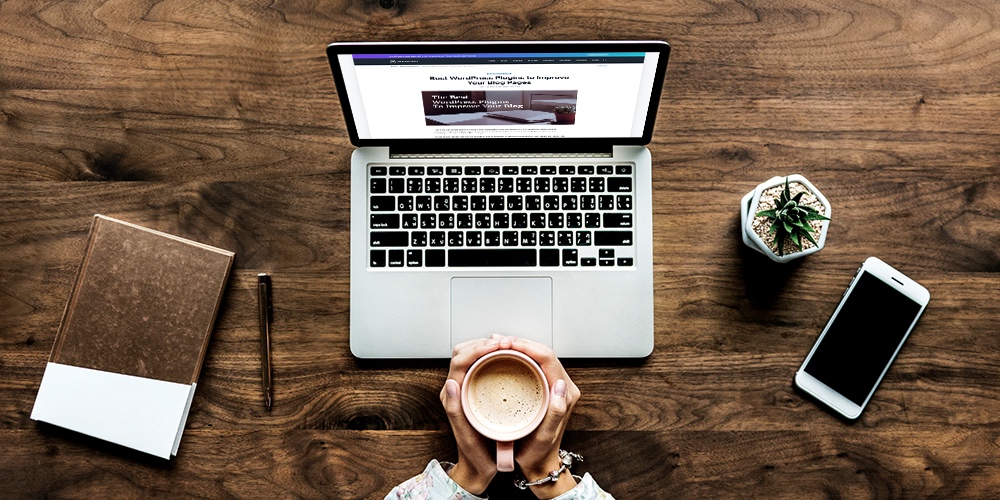How to Make the Most of Blog Posts for Small Businesses

Rumour has it that WordPress users publish about 70 million blog posts every month. Does this mean you should join them as soon as possible and start blogging yourself?
Definitely. In fact, having your own blog can bring multiple benefits to your business. In essence, it’s a low-cost alternative to having a web presence that gives you plenty of opportunities to share your insights, reach your target audience, and convert website visitors into customers. And the best part? With powerful Content Management Systems like WordPress, running your own blog is now easier than ever (actually, here’s why WordPress is perfect for any small business out there).
The bad news, however, is that simply setting up a blog won’t be enough to make the most of its potential. Luckily, we have a few tips that can turn you into a successful blogger in no time. Let’s begin!
1. Gear Up

Starting a blog might seem like a pretty straightforward decision to make, especially given the benefits of WordPress blogging. Nevertheless, this decision comes with a few other important choices – such as picking the right CMS and additional tools or integrations that can help you make the most of your blog posts.
How can you make this process easier? Start with an easy, popular CMS. Taking into account that 35.7% of all websites on the Internet are powered by WordPress. It’s definitely one of the most popular (and liked) solutions out there. Plus, you can easily pair it with other popular blogging plugins – such as Google Analytics, email marketing software, or SEO tools.
At the same time, you shouldn’t neglect the design of your blog and the quality of the visuals you’re going to include in your posts either. They should all be appealing enough to make your blog pleasant to read. Fortunately, once you choose WordPress, you can easily pick the best WordPress theme for your blog and make a few adjustments to make it more “yours”. Then, free stock photos and online image design tools will come to the rescue when you’re looking for appropriate images for all your posts.
2. Check on the Competition

As already mentioned, there are millions of blogs out there. In such circumstances, getting your blog off the ground and attracting visitors is not the easiest – especially if you don’t know who you’re up against. Something that can definitely help is to take the time to thoroughly research your competitors. Many of them might be seasoned bloggers, but it doesn’t necessarily have to be a bad thing. You should think of it as an opportunity to learn from their mistakes. Now, how can you make the most of this opportunity?
To begin with, try to identify the best-performing blogs. Then, look for patterns – what blog posts seem to be the most successful? Why? Is there anything you could add to the topics that attract the most readers? The idea here is to find your own niche and a specific angle that can differentiate your blog from the competition.
Don’t worry if you’re struggling with competitor analysis, or if it’s taking way too much time to go through all the blogs out there. If that’s the case: simply try to experiment with tools like SEMrush or Ahrefs. The least they can do for you is to provide you with a set of relevant keywords that are driving traffic to your competitors and specific pages that are ranking high for them.
3. Invest Time in Your Own Blog Posts

This should go without saying, but you definitely won’t get the most out of your blog posts if their quality is low in the first place. There are at least a few things you need to take care of when blogging – and keeping an eye on your competition is just the beginning.
First of all: keyword optimization. Fortunately, the above-mentioned tools can also help you find phrases that potential customers might be searching for, and are relatively easy for your blog to rank high for as well. Then, it’s time to write a piece that potential customers will be willing to read, and hopefully share.
Second, when it comes to small and medium businesses, it never hurts to get coverage on social media, as well as industry-related sites and blogs. In order to do so, you have to keep publishing well-thought-out and in-depth resources and invest in social media marketing. Interestingly enough, blog posts are also much more likely to get shared on social media by your email subscribers – so don’t neglect to build your email list. Think of yourself as an industry expert that’s yet to be discovered!
As a matter of fact, blogging is a great way to share your knowledge with your customers and assert your authority as an industry leader. Many businesses are trying to achieve exactly that, but not all of them are paying enough attention to their blog posts to be able to do so. Make sure you give all your pieces some thought (and a second opinion, if possible) – this will actually help you stand out from the rest in the long run.
4. Stay Consistent

No worries – being consistent is not about publishing content each day. Quality still matters more than quantity here, but it doesn’t change the fact that posting regularly is also important. Don’t just “put all your eggs into one basket” by publishing a few blog posts within a week, and then remaining completely silent for months.
Essentially, the more you publish – the more chances you have to reach your target audience and make the most of your blog. Even though there’s no single recipe for success when it comes to publishing frequency, it’s really worth staying consistent. In fact, 44% of bloggers prefer publishing new posts “only” 3-6 times per month but still doing so regularly.
Staying consistent also applies to your content promotion efforts. Especially at the very beginning, it might be really difficult to attract any readers at all. Try to put some budget aside for promoting your blog posts. If they really are high-quality (as we already discussed), they should start generating some organic shares, likes, and email subscriptions on their own pretty soon.
Yet again: don’t just rest on your laurels. Keep writing, improving, and promoting your content with every blog post. And if you need some help staying on track, consider using an editorial calendar to plan and organize your blog.
5. Be on the Lookout for Backlinks & Guest Posts

Content promotion doesn’t only come down to social media ads and email marketing efforts – you can easily build authority and drive traffic to your blog with relevant backlinks and guest posts. And in many cases, you won’t even have to spend any money on it. What’s not to like about that?
It’s important to be picky about the linking pages and anchor text as well as guest post opportunities. If your content actually adds value to a respected source, it can easily send some traffic (and potential customers) your way. On the contrary – when contributing to dubious pages, you’re unlikely to build trust amongst your target audience. Once again: remember that when it comes to blogging, it’s all about quality.
6. Engage with Your Blog Visitors

Hopefully, by now you’ve created high-quality, maybe even thought-provoking blog posts related to your business, and attracted a considerable number of visitors on top of that. But what if they actually wanted to ask you a question about your content?
Yes, you’ve got that right – insightful blog posts are perfectly capable of prompting a conversation with your potential customers. In order to make that happen, make sure you have the contact section (one of these contact form plugins) well-displayed on your blog and leave some space for comments.
Better yet, you could also implement plugins to encourage engagement. By adding a comment subscription (like Subscribe to Comments Reloaded), pop-ups, or even a live chat plugin (like LiveAgent) on your blog you can have an actual conversation with your readers.
Start Making the Most of Your Blog Posts
Still not sure whether your SMB needs a blog? Ask yourself these few questions:
- Do I have enough time to consistently create in-depth content?
- Can I reach my customers this way?
- Am I able to make the most of my blog posts?
If the response to all of the questions above is “Yes, of course!”, you’re likely to succeed and actually get the most out of your blog. Once you’re at it – keep all our tips in mind and don’t be afraid to experiment with different tools and tactics. The key is to see what works best for your business and to keep doing just that. It might be the case of trial and error at first, but the results can truly surprise you in the long run.
Remember: the competition never sleeps! Given the number of blog posts being published regularly by WordPress users alone, someone might already be fighting for your customers. Don’t let them win.




Thx a lot for these tips – i’ll use them for my blog 🙂